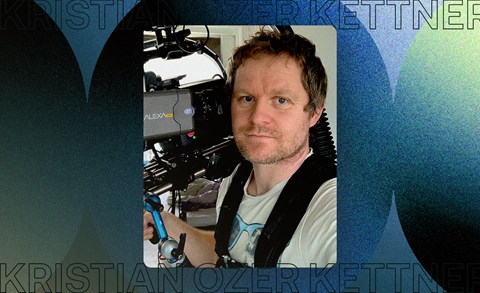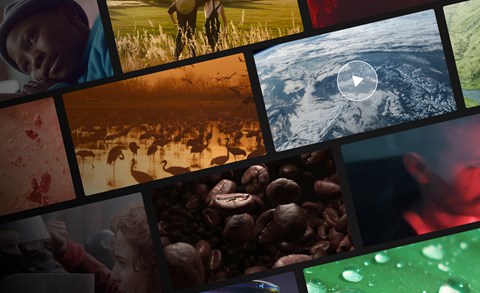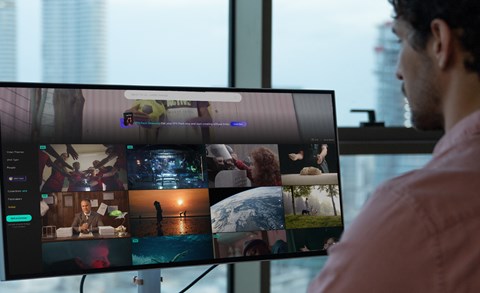Serafima Serafimova is a London-based animator with a Vimeo Staff Pick Badge under her belt. She lives and breathes animation, and when she’s not creating or cutting short films, she usually watches or writes about them.
We wanted to learn more about her work, so we asked her some questions about her creative process and what inspires her.
Who is your favorite female animator, and why?
It's got to be the Swedish Director and animator Anna Mantzaris. She is an absolute stop-motion animation wizard, and her work absolutely blows my mind.
How do you keep up with the latest trends in the industry?
I spend far too much time on Vimeo, watching shorts. I'm also a programmer and writer for short film and animation festivals Short of the Week and Directors Notes, where I screen hundreds of submissions. It's a great way to stay up to date with the latest trends and keep track of all the talented filmmakers out there. It's also super inspiring :)
What are the best and worst aspects of working in the animation field?
The best thing about animation is that there are no restrictions to what you can create. Unlike live-action, animation is only limited by your own imagination. I also think that conveying certain moods and emotions is often more effective when it's done through animation.
The worst aspect is definitely the time it takes. Animating is a painstaking and mind-numbing process. With rotoscoping in particular, since every frame is hand-drawn, it often feels like you are literally drawing the same thing over and over again. Once you hit render, though, it makes it all worth it. Unless, of course, you find out you made a mistake, in which case, you feel the most irresistible desire to throw your laptop out the window...
How do you turn a concept into visual elements? Describe your process.
All my animations start on a timeline in DaVinci Resolve. As a video editor, this feels like a natural place to begin building the stories I want to tell. First, I plow through countless video clips, which I then cut together, allowing the story to emerge from there. After that comes the music, which is absolutely vital as it dictates everything from the pace to the mood and the energy of the film.
Once I've added the track and I'm happy with the cut, I move on to the animation design. This could be a fairly lengthy process, and it involves plenty of trial and error to figure out what works conceptually and aesthetically. There really is no point in doing the same thing time and time again, so I always try to push myself in some way or another.
What do you consider your most successful project in animation and why?
It has to be 'Still Life', which I did during the first lockdown when I was laid off. It was such a scary period, and I suddenly found myself with so much free time and not much to do with it since we weren't even allowed to go outside. So I saw it as an opportunity to make something that would keep me physically and mentally occupied and stop me from losing my mind. I poured all my thoughts, energy and time into it. The animation completely consumed me for a couple of months, which was utterly draining, but I absolutely loved every second of it.
Being close to people, socializing, dancing and exercising were the things I missed the most. So Still Life was all about celebrating human closeness and the beauty of movement at a time when the whole world stood still. When I released it, the animation received an overwhelmingly positive response, and people seemed to genuinely resonate with its themes. I really couldn't have asked for more.
What is the story behind the story "Sketched Animation Gymnast"?
Rotoscoping is all about movement. I had previously made animations about dance and winter sports but always wanted to animate gymnasts. I find the way their bodies move, twist and contort into shapes that should not be physically possible absolutely mind-blowing. I see them as superhuman, really, so the desire to capture their beauty, skill and strength inspired me to create my gymnast.
Can you tell us a bit about the most challenging projects you have worked on?
The most challenging animation I've done is definitely FLAWED. At the time, I just threw myself into it without giving enough thought or consideration to the design and how time-consuming it would be. For example, deciding to fill in the characters with a solid color added so much work, time and stress to my plate, and in hindsight, I'm not sure it was worth it. It was also the first time I started playing with transitions rather than straight cuts between the shots, which was hugely challenging and ate up tons of my time.
What kind of education did it take to get you to where you are today?
I actually completed a degree in Fine Art from Camberwell College of Arts (part of the University of The Arts London). Then I got a job at a small, ethical production company called Nice and Serious, where I eventually trained and became a video editor. 12 years on, I'm still at Nice and Serious (now an ethical creative agency), where I edit, direct and sound mix short films and animations. In addition, I work on my personal projects in my spare time.
What is your favorite Animation technique, and why did you choose this technique?
Rotoscoping has a bit of a bad reputation as it involves drawing or tracing over live-action footage, and many people consider it an inferior (or at least easier) animation technique. So I've been on a bit of a mission to prove that rotoscoping is just as challenging and worthy as any other animation technique. I think it's such a unique and utterly captivating technique, which twists reality, turns it on its head and makes us, the viewer, question everything!
If you weren't an animator, what would you be?
A competitive chili eater
Fill in the blank: The future of animation is...
Rotoscoping!






